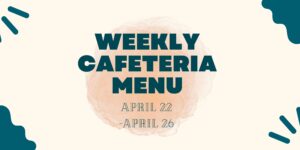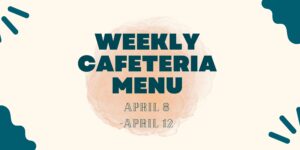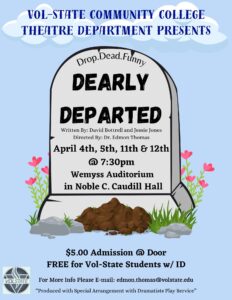Last updated on March 4, 2020
By Luis Quintanilla
For all of humanity’s grand work, for all of its accomplishments and progress made through its undeniable ingenuity and adaptiveness, it is often reminded of its fragility and wobbly place in the world like anything else.
Recently, having flipped through news channels or even scrolling through the front pages of Facebook or Twitter, one has surely seen the infamous “coronavirus,” a word now as widespread as the virus itself. Beginning in China a little over a month ago, this virus, this microscopic pathogen has sent panic, and at times disorder, throughout the globe as well as subtlety reminding the world how ill-prepared it is to deal with a pandemic.
Recently the Centers of Disease Control warned the American public that it is not of matter of if it will spread in communities in the U.S., but a matter of when. It went on to warn that daily life could be disrupted as hospitals become overwhelmed, schools must close and people may become more absent from their jobs.
The virus appears to have began in Wuhan, China in late 2019 according to the Center of Disease Control. According to its website, the current coronavirus, COVID-19 (coronavirus disease 2019 abbreviated) is just one of various different types of coronaviruses such as SARs and MERS which caused their own concerns when they emerged in 2002 and 2012 respectively according to National Institute of Allergy and Infectious Diseases. These viruses, according to the CDC, are found in animals and are then transmitted to humans.
On an episode Vox’s documentary “Explained,” the topic of pandemics was explored. In it, it chronicled the outbreak of SARS in the early 2000s, its origins and how easily it spread. SARS, as well as the current coronavirus, appear to have originated in large seafood markets and live animal markets in China. The CDC backs this up by reporting the first people infected were usually around these markets.
Since these types of viruses are found in animals, they thrive in these types of markets where animals are stacked on top of each other in small cages, in filthy conditions and are often butchered on the spot to provide the freshest meat. These markets are a virus and bacteria’s paradise to reproduce and thrive in.
The viruses then spread to humans if the meat bought at these markets is not thoroughly cooked. Once in humans, the virus can begin to spread from human to human. From breathing in the air around a sneeze to more subtle and silent ways, the virus will soon be difficult to contain as it slips through officials hands like a phantom. In the same Explained episode, in the case of SARS an infected person checked into a hotel and on the way to his room, feeling ill, vomited and coughed up droplets in the hallway and elevator infecting the 16 people in the rooms along his path. After checking out, these people went back to their home countries spreading the virus in even further directions catalyzing the spread more.
18 years later, the world is witnessing another infectious snowball, one that has more momentum. In a world of eight billion people connected within hours or days with planes, ships, and cars all bundled up walking side by side in crowded cities and interacting with one another at school or work, a new pathogen would have a field day replicating itself in humans, as the world is not witnessing.
To make matters worse, media such as social media, while far reaching as anyone can become a journalist from their phone, can at times give unreliable information about outbreaks spreading more panic and disinformation. On top of this, the current government administration appears to be ill-prepared to deal with an outbreak, as it is currently downplaying COVID-19’s potential severity and even setting a gag rule as any government health officials must get Mike Pence’s , the person now in charge of the coronavirus task force, approval before making any statements on the virus.
The globe seems to have knit a tight infrastructure, one that is integrally woven into each other as billions of people depend on resources such as food, medicine, and the overall economy that is birthed from this interconnectedness. However, the virus is a threat to that infrastructure. People cannot work when sick, and therefore industry may halt as seen in China where factories producing important medicines where closed due to illness. Rapidly, a microscopic virus could wreak havoc on this global infrastructure.
This is not meant to scare and spell doomsday prophecies nor compare it to plagues such as the Black Death, but instead should serve as precaution and reminder of our susceptibility to outbreaks. For as long as humans have been alive, we have been fighting perhaps our greatest enemies, microscopic bacteria and virus. These invisible enemies have the capability to render us weak and bring us to our knees as seen in extreme cases such as the Plague and the Spanish Flu. How such a minuscule thing can kill more than all the wars in history is fascinating yet terrifying at the same time. For the most part we have conquered most of these invisible enemies finding cures and vaccines to make our lives easier and smoother than could have been imagined even 100 years ago, but we are never fully out of the woods. It is now apparent there are still new pathogens waiting to be unfortunately discovered.
On a grand scale, the world perhaps needs refining in its preparation department for this and future outbreaks, hopefully this one serving as a wake up call. On a daily scale in one’s daily life, one should always take measures to prevent infection and spreading such as thoroughly washing his or her hands, following respiratory hygiene and seeking medical attention if any symptoms begin to feel off. Better education of these pathogens, how they begin and how they spread coupled with better response will not shield us from a blow in the future, but certainly give us more stable footing in handling them.




Comments are closed.